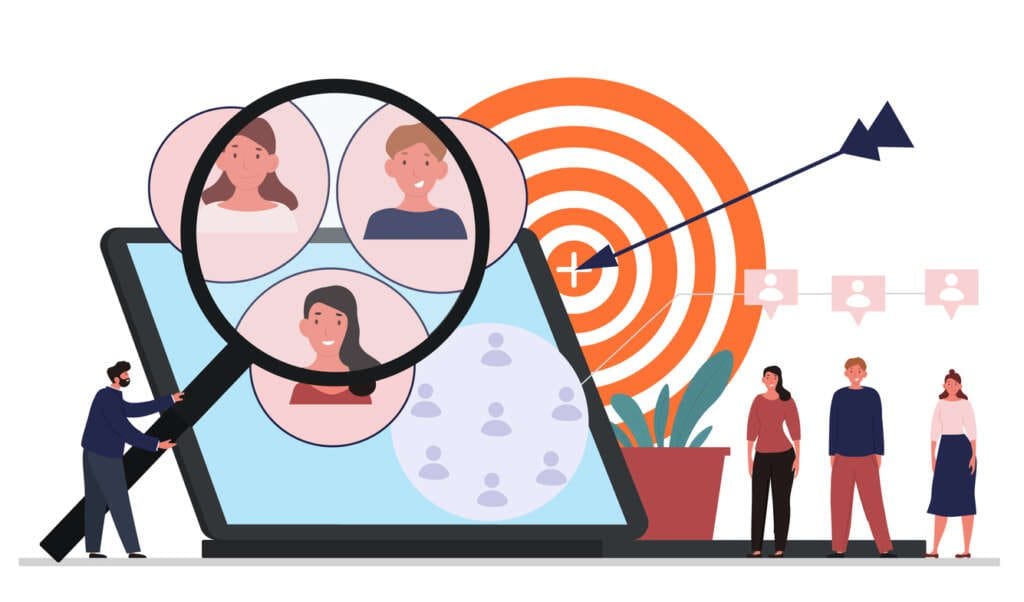
Marketing targeting strategies are the key to getting your message across to your target audience. Whether you’re looking for a way to reach a large audience or a small group of niche fans, there’s a marketing strategy out there for you. And when you’re using these strategies to your advantage, your customers will be more satisfied with your products and services.
When you are creating your marketing targeting strategies, it is important to consider a few things. The first thing you need to know is whether you are targeting individual consumers or groups of people. You can target a group of consumers using mass marketing, segmented targeting, or micro-targeting.
Microtargeting
Microtargeting is a method of marketing that uses a combination of data, predictive analysis, and consumer behavior to create a targeted campaign. It helps businesses reach more targeted audiences and create better customer engagement.
This type of marketing strategy can be a powerful force multiplier in a company’s advertising budget. Many companies and political entities make use of microtargeting in their campaigns. The practice allows advertisers to target small, niche audiences. In turn, they can increase their customer engagement and sales.
However, there is also a risk involved with the practice. If a business fails to properly segment its customers, it may end up with a cold audience. By targeting specific groups of consumers, firms can ensure that their message will be received by people who are more likely to respond to it.
As microtargeting increases customer engagement, it helps businesses get a clearer picture of their ideal customers. This can make online marketing more effective. And when done right, it also builds loyalty and creates long-lasting business relationships.
Historically, companies used income, purchase history, and location to segment their customers. Today, however, digital platforms like Facebook and Google have evolved to make more granular customer marketing segmentation possible.
Microtargeting is a strategy that relies on high-quality information. This can be data collected from a company’s database or third-party sources.
For example, Facebook uses a variety of data brokers to collect data from its users. It then sells that data to advertisers. This way, it’s possible to create personalized campaigns for each of its user’s unique interests. Depending on what data is sold, the resulting campaigns can be tailored to each individual’s needs.
The only way to prevent this from happening is to be aware of the risks. Having a good understanding of what to avoid can help you ensure that your marketing results aren’t marred by lazy, ineffective practices.
Segmented Targeting
Segmented marketing targeting strategies help brands reach different groups of consumers. In particular, they are a useful tool for B2B companies because they allow them to target specific markets. This allows companies to improve their customer experience, while at the same time tailoring their offers to a targeted audience.
Segmented marketing targeting is a good way to get more out of your advertising budget. It provides a more tailored approach to the process, which means less waste for the company and better returns for the advertiser.
However, a targeted approach requires some research into what different market segments require. Depending on the type of marketing, you can use demographic, psychographic, or geographic variables to segment your audience.
One of the most important aspects of segmented marketing targeting is that it helps you avoid the pitfalls of overexposure to your consumers. A targeted approach will ensure that you only spend your advertising budget on the right audience.
Another benefit of segmented marketing is that it increases brand loyalty. Companies that take the time to understand their consumers are more likely to provide quality service and products. Additionally, knowing your audience will also improve the effectiveness of your marketing efforts.
Developing a marketing strategy that identifies the best possible services and products for each market segment can help drive more profit. For example, a high-end musical instrument may be more appealing to an enthusiast than to a music teacher. While the price of a product is crucial, it is the quality that counts.
The right marketing strategy can give a business a competitive advantage over its competitors. Marketers have long realized that customers are not all alike. They differ in age, location, lifestyle, and preferences. By identifying and catering to these differences, you can maximize your investment and drive sales.
Targeting the right customer with the right message can be a complicated and overwhelming task. But, with the help of technology, you can personalize your advertising to fit the needs of individual consumer market segmentation. That means more leads, higher response rates, and a better return on your investment.
Differentiated Targeting
Differentiated targeting in marketing is an important component of a successful marketing campaign. The purpose of this strategy is to identify a specific target audience and develop a message for them. However, the campaign also has to be consistent with the brand’s overall positioning strategy. It is not always easy to target different demographics with one message.
Differentiated targeting in marketing requires an in-depth analysis of a target market and a personal connection. Marketers must consider several factors, such as price, style, and location, before determining what kind of approach to take. While this may seem like a simple matter, it’s a difficult decision.
Differentiated targeting in marketing can be a good strategy for companies with a variety of products. A beauty care product, for example, can be tailored to a specific skin type or age group.
Brands often build unique offerings for specific market sectors. Nike, for instance, runs campaigns that reach each segment on a personal level. They use separate advertisements for different fan bases, a strategy that has helped the brand remain dominant in sports footwear.
One benefit of differentiated targeting in marketing is the opportunity to expand the customer base. By targeting multiple segments, a brand can gain a better understanding of its target market and offer more relevant products and services. These offerings are also a way to stand out in the marketplace.
Targeting a variety of segments requires time and money. An undifferentiated approach may work for a common product or service, but a more targeted and expensive marketing approach is required for specialty items.
Differentiated targeting in marketing allows businesses to focus on the needs and values of specific segments. This makes it easier to connect with potential customers and increases conversions.
Companies should avoid using undifferentiated marketing. It can cost more than other strategies, and it’s risky. Mixed messages can confuse prospects and erode a company’s position. To avoid this problem, advisors must have a clear, effective message that outlines how their services can help their clients.
To achieve this goal, advisors must be willing to spend more money and have a deep understanding of their target consumers. Marketing research can provide these answers.
Mass Marketing
Mass marketing targeting strategies are used by companies to appeal to a large audience and maximize the exposure of a product. The strategy involves distributing a single product to a mass market, which is a non-defined segment of the population.
This approach also helps to reduce the costs involved in the production of goods. Companies can save on manufacturing costs as well as unit costs by offering a mass-produced product.
However, the benefits of mass marketing can be countered by some disadvantages. For example, the cost of advertising can be high, and companies aren’t guaranteed to reach a target group of consumers. Furthermore, customers aren’t likely to develop loyalty to a brand that targets everyone with a “one size fits all” strategy.
Targeting strategies may be a better option for smaller businesses that sell to a niche market. This approach allows them to tailor their products to individual consumers and can lead to more effective marketing campaigns.
The downside to using a mass marketing targeting strategy is that consumers become bored with the message. As a result, the message can be diluted, and the company can miss an opportunity to generate sales.
However, a growing number of consumers are looking for specialized products. Companies can use buyer personas to identify the characteristics of each consumer group. By targeting a specific consumer, marketers can fine-tune their product offerings, and ensure that they are providing a positive user experience.
A key benefit of targeted marketing is that it is much cheaper. This allows companies to spend less on producing advertising and less on the production of the actual product. It also gives them the ability to speak directly to the people they want to reach.
Another benefit of targeting strategies is that they can help to increase consumer satisfaction. By focusing on customer interactions, companies can create deeper relationships with their consumers. In addition, consumers find online reviews more trustworthy than commercials.
When selecting a targeted marketing strategy, it is important to choose one that will fulfill the goals of your business. By targeting a specific audience, you will be able to create a better impression with your consumers and drive more leads for your business.
Lookalike Audience Targeting
Creating Lookalike Audiences for your marketing campaigns can be a powerful way to expand your brand’s visibility. These audiences allow you to reach new customers who have a high interest in your products or services. Using Lookalike Audiences in your campaigns can also reduce your ad spend.
To create a lookalike audience, Facebook allows you to use your customer database, or upload a list. You can target a group of people, or even an entire country, to build a custom audience. This will give you more accurate results. However, it can take several hours to set up a lookalike audience.
Ideally, you should include at least 100 people in your seed audience. Creating an audience with more than a thousand can make the lookalike audience less accurate.
Lookalike audiences can be used in both online and offline advertising. They can be used to generate traffic, increase brand awareness, and reduce ad costs. It is important to keep track of the results and optimize your targeting.
The size of the lookalike audience will affect the amount of traffic that it produces. Facebook recommends using an audience between 1% and 10% of the total population. If you are looking to build a large, targeted net, you may want to choose a higher percentage. But if you are looking for a smaller, more specific sample, a lower percentage will work best.
Lookalike audiences will refresh every 3 to 7 days. As the algorithm learns more about your audience, the number of people you can reach will increase. Ultimately, the goal is to find lookalikes that are denser in the trait that you’re looking for.
For example, a B2B ad campaign might want to target companies that don’t offer free products. By creating a lookalike audience with a high percentage of businesses that don’t offer free products, you’ll be able to target more companies and generate more revenue.
A Lookalike Audience is an ideal representation of your best prospects. It can help to lower your ad costs and improve your conversion rates. Just remember to test different lookalike audiences to ensure you’re getting the most value.
Niche Targeting
Niche targeting in marketing involves narrowing down your target audience to specific segments. By catering to one segment, you can better focus your efforts and streamline your operations. The process is not always easy, but it can pay off big time.
First, you need to figure out what a niche market is. Typically, this includes a large group of people who share common interests and desires. This group has the largest potential to buy your products or services. To find a niche market, you need to understand your product or service, which will allow you to determine a target audience.
Next, you’ll want to look at what your competitors are doing. You’ll need to check out their social media accounts to see if they are engaging their target customer. If they aren’t, they may be missing out on the opportunity to connect with their customers.
When choosing your niche, it’s a good idea to take advantage of tools like Facebook ad targeting. These can help you direct traffic to landing pages. You can also use your niche to identify key demographics within your target audience.
Another way to find your niche is by identifying the trends affecting your industry. For instance, if you’re a landscaper, you might enjoy working in senior communities. Or if you’re a photographer, you might be good at the candids of children.
You can also find niche markets by searching for interest groups on social media. However, you’ll need to put some time and effort into finding the best ones.
Once you’ve identified your niche, you’ll need to find out if it’s a viable business model. A specialized business can compete against fewer brands and give you more marketing budget to spend. Lastly, you need to differentiate yourself from the competition. Identifying your brand’s unique selling points can help you attract a loyal customer base.
Finally, you’ll need to create a strategic marketing plan that will attract your target audience. This means more research and planning, but the rewards can be well worth the effort. With a targeted audience, you’ll be able to build a relationship that can lead to long-term loyalty and positive word-of-mouth.
Advantages Of Marketing Targeting Strategies
Target marketing is a great way to get more out of your marketing budget. It can help to focus your campaigns, improve sales, and increase leads. If you’re using target marketing, be sure to use the right techniques to achieve optimum results.
One of the most common advantages of targeting is that you’ll have a more direct and meaningful relationship with your audience. The most effective target marketing programs involve identifying your target audience, then interacting with them in a way they can appreciate.
A good example of this would be remarketing, a process by which you retarget past visitors with advertisements. This may also serve as a way to encourage repeat visits by your past customers.
Another advantage of targeting is that you can get better conversion rates. By targeting the most qualified leads, you can raise the odds that they will convert to sales. This is especially important for businesses that need to sell multiple products to a variety of segments.
For example, a restaurant may want to send promotional emails to its parents or office workers. They may also consider sending a customized product to one of their customer segments.
The second advantage of targeted marketing is that it saves you time and money. It doesn’t require you to waste resources targeting people who are not likely to purchase your products. Using a variety of demographic and psychographic variables allows you to narrow your marketing scope to the people who are most likely to respond to your offerings.
Finally, targeting can make your business more competitive. By offering a specialized product to a segment, you’ll stand out from the crowd. Having a specialized offering will help you retain existing customers and attract new ones.
Identifying your target market will also help you determine what types of advertising will work best for your business. Knowing what your competitors are doing will also help you decide what kinds of marketing techniques you should be putting your resources into. Getting an idea of what your competition is doing can help you develop more effective strategies to outsmart them.
Determining what your competitors are doing is one of the most valuable pieces of data you can gather for your business. This information can be used to counter their strategies, identify problems with your marketing, and learn what your prospective customers think.
Using the customer match feature in your marketing software is a particularly useful tool. The feature analyzes your customers’ current and historical data to determine what types of ads are likely to get them to buy. You can also track what sites they visit. Your audience will be more likely to engage with your messages if they’re being delivered on the right sites.
Creating targeted marketing campaigns is not a quick or easy task. However, it can be a great way to improve your conversion rate and reach the largest possible number of consumers. Moreover, it can help you achieve a more focused vision for your business.
The Importance Of Marketing Targeting Strategies
Target marketing is a great way for businesses to connect with potential customers. It allows them to focus on specific groups that have a higher chance of making a purchase. By targeting these consumers, brands can improve their return on investment (ROI) and boost their overall performance. With the right marketing strategy, you can also boost your brand reputation and increase your odds of making a sale.
Targeting can also help you to avoid wasting your time and money on people who aren’t interested in what you have to offer. The best way to market to your target audience is to use language they will understand.
This makes your messaging more effective and ensures you get the results you want. For example, you might consider using a display ad to attract visitors to your website or a personalized email to guide customers through the purchase funnel.
Market targeting isn’t just a cool concept, it’s an essential part of any successful business plan. Whether you’re starting a new company or looking to re-brand your existing operations, having a target market in mind is an important component of success. You can tailor all aspects of your operation to suit the needs of your chosen demographic. Using this approach can also allow you to create more personalized business relationships with your targeted buyers.
The biggest benefit of targeting is that it enables companies to concentrate their resources on the most valuable consumer segments. This helps them to make the most of their limited resources. As an example, a day planner brand might decide to target female business owners. They can then send out emails to the ladies on their list. These strategies are effective because they’re more likely to result in quality leads.
While the importance of targeting might be hard to measure, you can get a sense of how it might benefit your business by seeing examples of it in action. Nike, for instance, offers different products for each segment of their target market. And it’s not uncommon to see a brand create a separate campaign for each group. Some brands even go so far as to send customized letters.
Market targeting is a useful tool for any company that wants to stay on top of the competition. By focusing on a smaller group of consumers, you can achieve the same goals with less effort. That’s because you’re able to devote more time and money to the groups that are most likely to leap. When you’re able to connect with these groups, you have a greater chance of creating a loyal customer base. In turn, these customers are more likely to buy from you again and recommend your product to others.
There are many ways to do this. For example, you can run a Facebook campaign with an algorithm that determines posts that will be seen by your target audience. You can also run display ads on websites that are known to be visited by your target audience.


